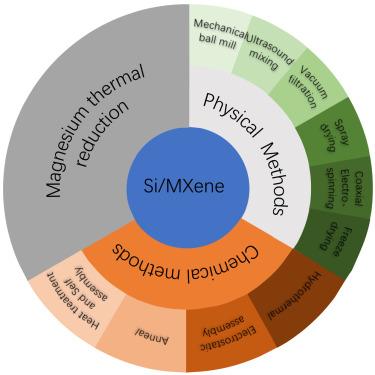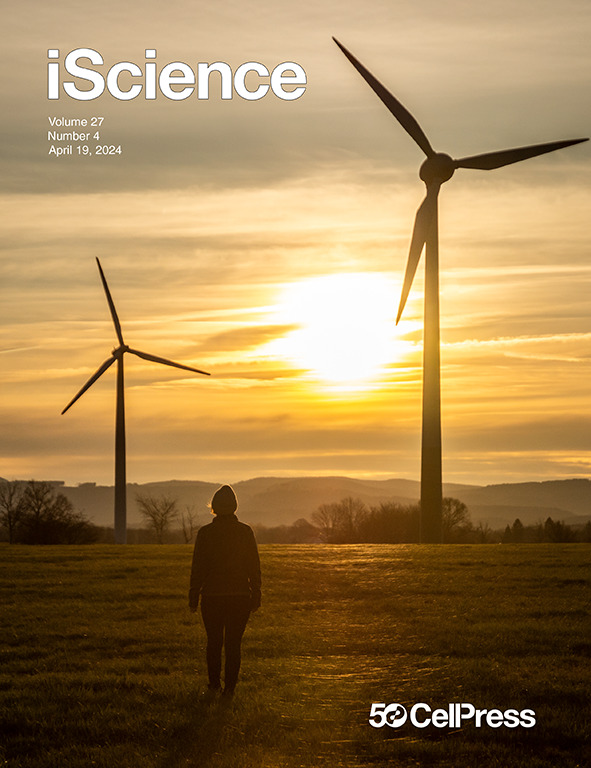用于锂离子电池的 Si/Ti3C2Tx MXene 负极材料的最新研究进展
IF 4.6
2区 综合性期刊
Q1 MULTIDISCIPLINARY SCIENCES
引用次数: 0
摘要
心血管疾病(CVDs)是一个重大的全球健康问题,在全球范围内造成严重的发病率和死亡率。早期诊断和持续监测生理信号对控制心血管疾病至关重要,因此有必要开发轻便、经济的可穿戴设备。这些设备应采用便携式能量存储系统,如锂离子电池(LIB)。为了提高监测系统的耐用性和一致性,有必要开发高能量密度的锂离子电池。硅基材料因其理论容量高和成本效益高,在未来的锂离子电池阳极中大有可为。尽管硅基材料潜力巨大,但也面临着体积大幅波动和动力学缓慢等挑战。过渡金属碳化物 MXene 具有二维结构,为硅基阳极材料提供了优势。本综述首先介绍了硅基阳极的潜力,然后探讨了其面临的挑战。随后,系统回顾了 MXene 的优势,包括独特的结构、丰富的表面官能团、优异的导电性和出色的离子传输性能。接下来,详细讨论了用于 LIB 的 Si/Ti3C2Tx MXene 阳极材料的最新进展,重点介绍了其合成方法。最后,探讨了合成 Si/Ti3C2Tx 纳米复合材料的挑战和未来前景,旨在为设计用于高能量锂离子电池的先进材料提供基础资源。本文章由计算机程序翻译,如有差异,请以英文原文为准。

Recent progress in Si/Ti3C2Tx MXene anode materials for lithium-ion batteries
Cardiovascular diseases (CVDs) are a major global health issue, causing significant morbidity and mortality worldwide. Early diagnosis and continuous monitoring of physiological signals are crucial for managing cardiovascular diseases, necessitating the development of lightweight and cost-effective wearable devices. These devices should incorporate portable energy storage systems, such as lithium-ion batteries (LIBs). To enhance the durability and consistency of the monitoring systems, there is a need to develop LIBs with high energy density. Silicon-based materials hold great promise for future LIBs anodes due to their high theoretical capacity and cost-efficiency. Despite their potential, silicon-based materials encounter challenges like substantial volume fluctuations and sluggish kinetics. Transition metal carbide, MXene, features a two-dimensional structure, offering advantages in silicon-based anode materials. This review initially presents the potential of silicon-based anodes and then addresses their challenges. Subsequently, the advantages of MXene are systematically reviewed, including unique structure, abundant surface functional groups, excellent electrical conductivity, and excellent ion transport performance. Next, the detailed discussion covers recent advancements in Si/Ti3C2Tx MXene anode materials for LIBs, with a focus on their synthesis methods. Finally, the challenges and future perspectives of synthesizing Si/Ti3C2Tx nanocomposites are examined, aiming to provide a foundational resource for designing advanced materials for high-energy LIBs.
求助全文
通过发布文献求助,成功后即可免费获取论文全文。
去求助
来源期刊

iScience
Multidisciplinary-Multidisciplinary
CiteScore
7.20
自引率
1.70%
发文量
1972
审稿时长
6 weeks
期刊介绍:
Science has many big remaining questions. To address them, we will need to work collaboratively and across disciplines. The goal of iScience is to help fuel that type of interdisciplinary thinking. iScience is a new open-access journal from Cell Press that provides a platform for original research in the life, physical, and earth sciences. The primary criterion for publication in iScience is a significant contribution to a relevant field combined with robust results and underlying methodology. The advances appearing in iScience include both fundamental and applied investigations across this interdisciplinary range of topic areas. To support transparency in scientific investigation, we are happy to consider replication studies and papers that describe negative results.
We know you want your work to be published quickly and to be widely visible within your community and beyond. With the strong international reputation of Cell Press behind it, publication in iScience will help your work garner the attention and recognition it merits. Like all Cell Press journals, iScience prioritizes rapid publication. Our editorial team pays special attention to high-quality author service and to efficient, clear-cut decisions based on the information available within the manuscript. iScience taps into the expertise across Cell Press journals and selected partners to inform our editorial decisions and help publish your science in a timely and seamless way.
 求助内容:
求助内容: 应助结果提醒方式:
应助结果提醒方式:


